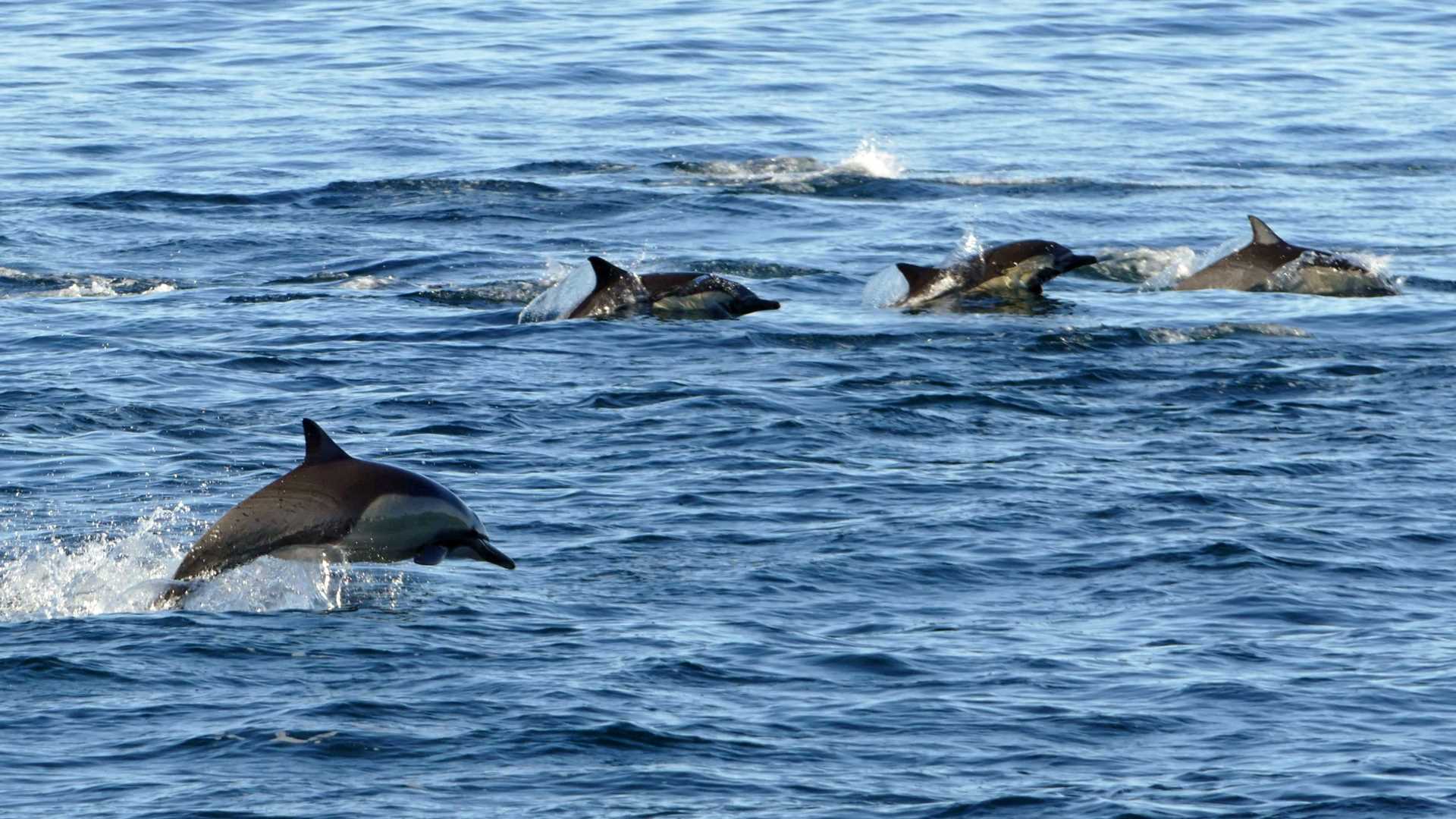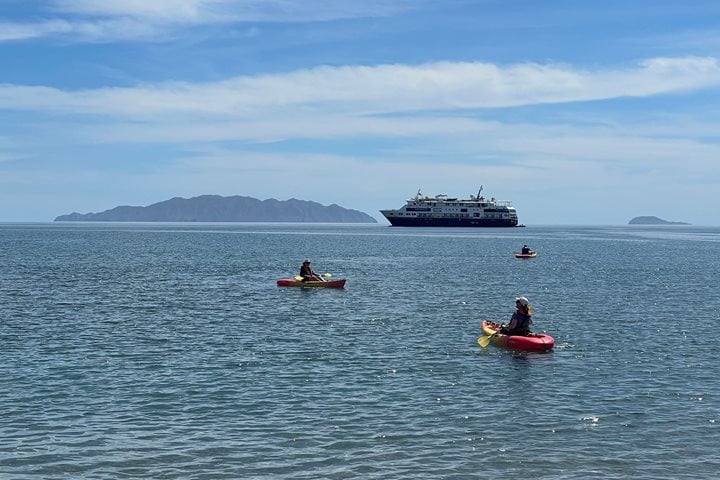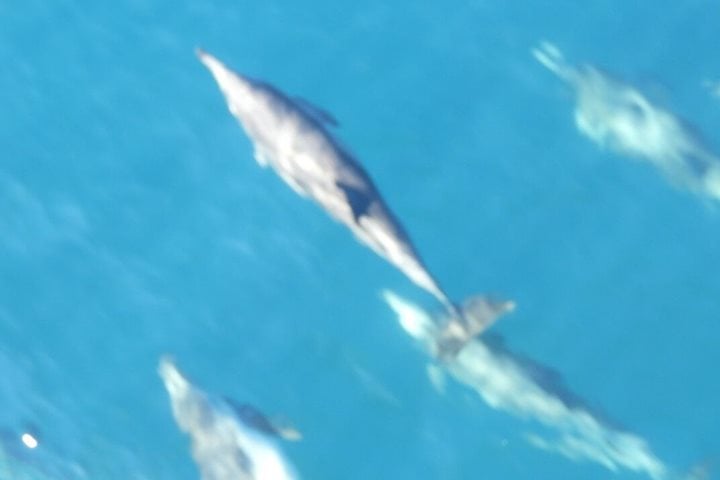Following our calm, starry, restful night northbound in the Pacific Ocean, early light softened the rocky edges of Isla Santa Margarita, one of the two impressive mountainous islands that border the large expanse of Magdalena Bay; the estuary that hosts the California gray whale nursery where we’ll spend the next three days. Bright fog streamed out of La Entrada, the entrance into the bay, and created fog bows and interesting atmospheric effects around us. A pod of long-beaked common dolphins delighted everyone and their graceful airborne antics gave us plenty of opportunity to practice photo techniques.
Inside the bay, the fog thinned and finally burned off leaving us under blue skies as we wound our way north through narrow mangrove-lined Hull Canal watching for seabirds and bottlenose dolphins and anticipating our first glimpses of California gray whales. Magdalena Island, a 60-mile-long border island to our west, offered contrasting views of desert, sand dunes, and mangroves.
Finally, just past a high dune known as Colina Coyote we saw our first mother and calf gray whales resting in the quiet shallow water. These are newborn whales; likely all are less than three weeks old, and some only a few days. The pregnant mother whales have been arriving the last few weeks to seek refuge in protected waters to birth their thousand-pound, 15-foot young, having carried them for the past year. They will nurse and train the next generation for about two months and then move back north to their Alaskan feeding grounds on the longest migration of any mammal-—5000 to 6000 miles each way.
And tomorrow morning, we’ll be among them in our inflatable boats.







